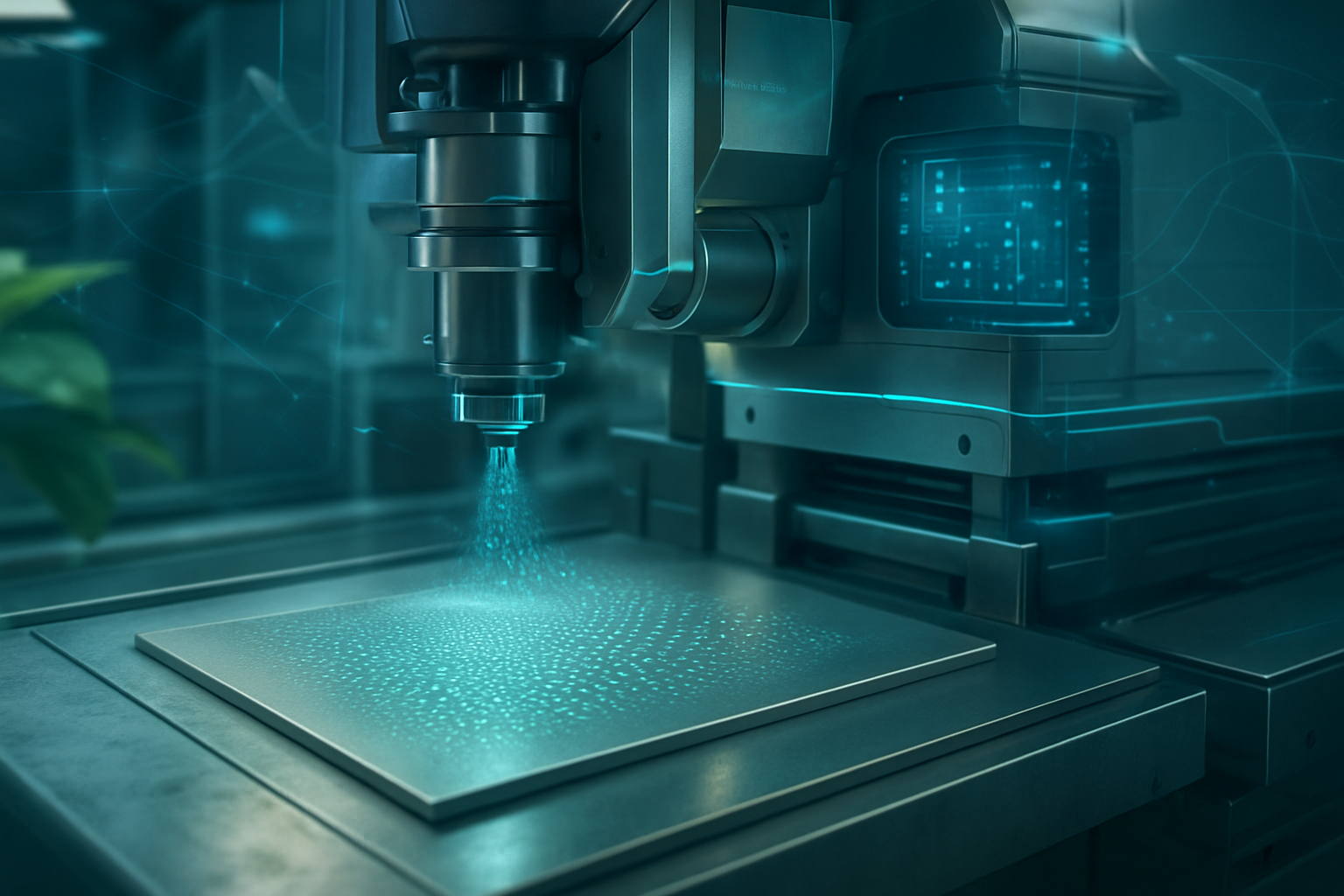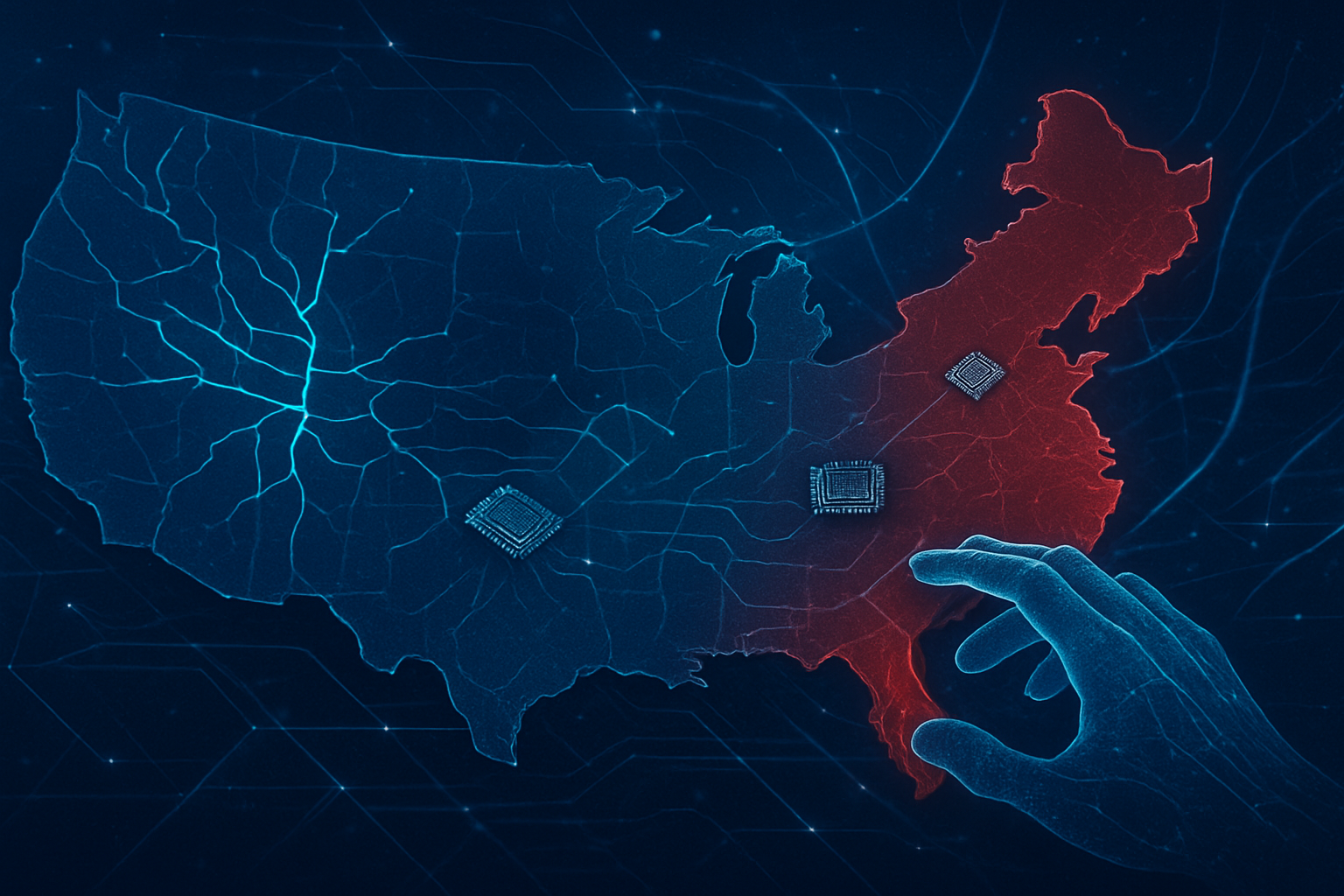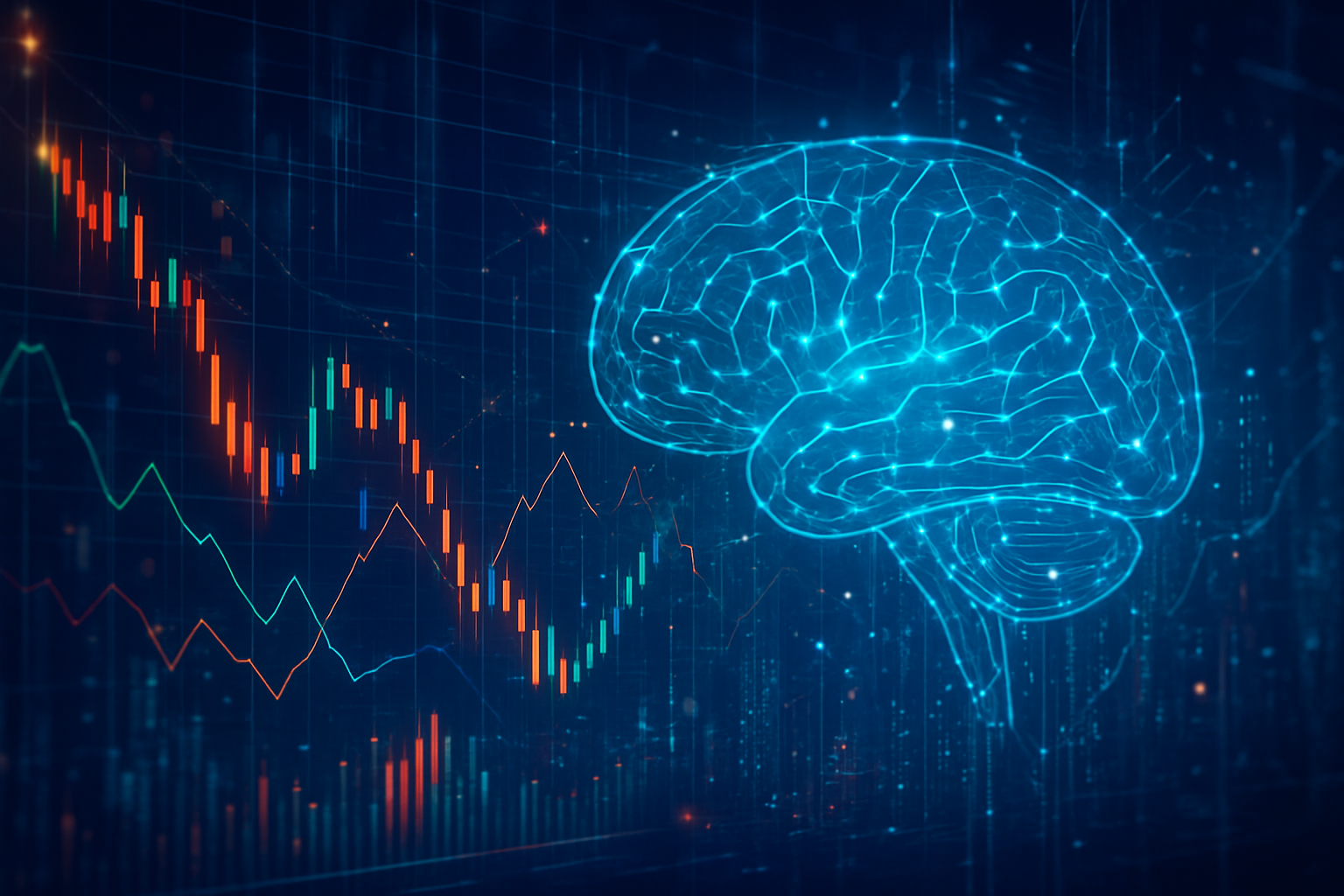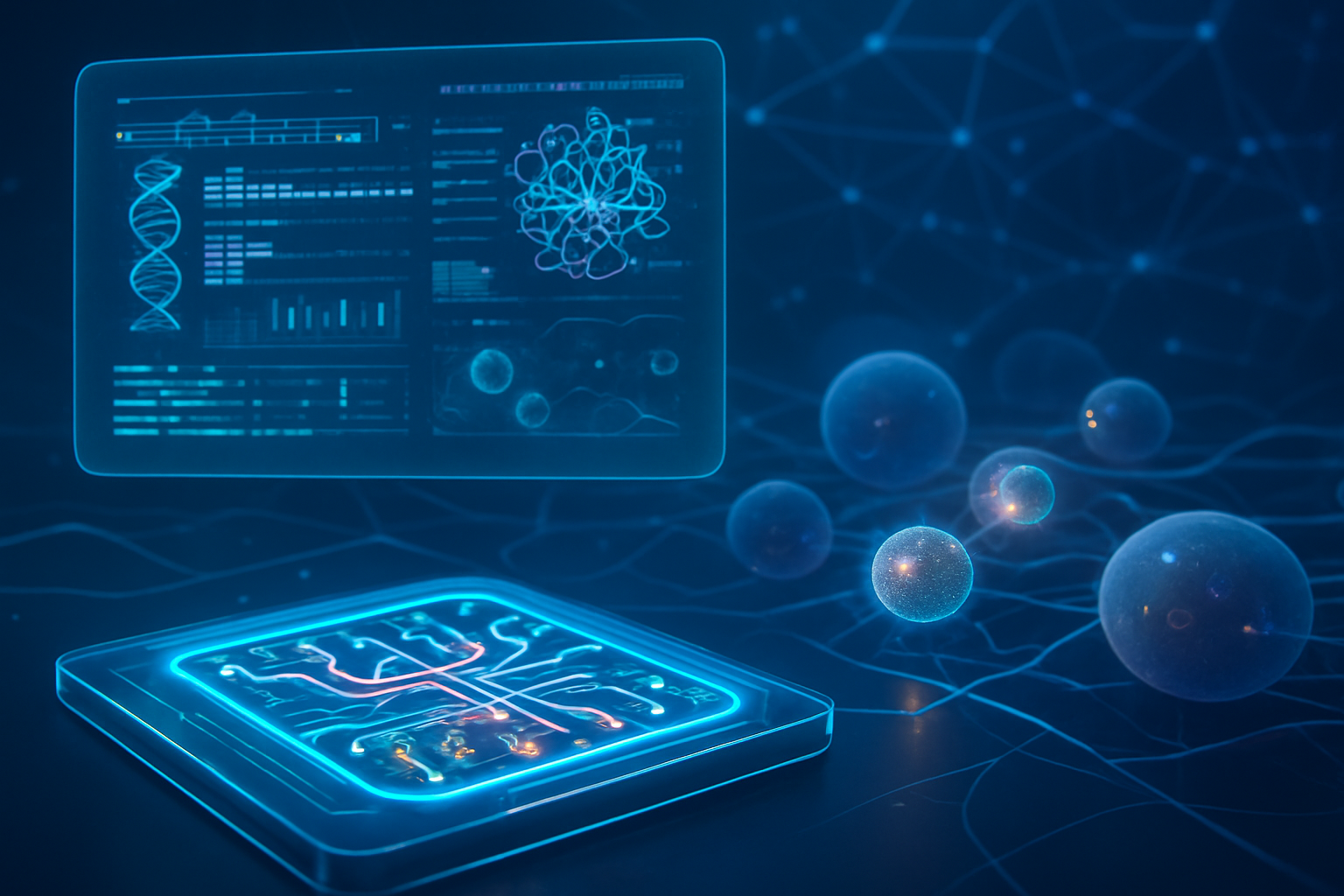The convergence of artificial intelligence (AI) with advanced bioanalysis and targeted drug delivery technologies is fundamentally reshaping the landscape of medicine and healthcare. These synergistic advancements promise a future of unprecedented precision, efficacy, and personalization in disease diagnosis and treatment. From dramatically accelerating drug discovery to enabling therapies tailored to an individual's unique biological profile, AI is proving to be an indispensable catalyst in pushing the boundaries of what's possible in modern therapeutics. The immediate significance lies in the promise of enhanced therapeutic outcomes, drastically reduced side effects, and more accurate, earlier diagnostic capabilities across a spectrum of complex diseases.
Technical Deep Dive: The Engines of Precision Medicine
The recent breakthroughs in advanced bioanalysis and targeted drug delivery are driven by sophisticated technological innovations that significantly surpass previous approaches in sensitivity, specificity, and efficiency.
In advanced bioanalysis, the focus is on the intricate detection, quantification, and characterization of biological molecules. Microfluidics and Lab-on-a-Chip Systems are at the forefront, enabling the precise control of fluids at the microscale. These systems operate with microliter to picoliter sample volumes, drastically cutting down reagent consumption and cost compared to traditional benchtop assays. Droplet microfluidics, in particular, allows for high-throughput screening by segmenting samples into thousands of discrete reaction compartments, accelerating drug discovery and single-cell analysis. The integration of multiple functions onto a single chip, as seen in "Micro Total Analysis Systems" and "Organ-on-a-Chip" models, provides more accurate in vitro models for drug testing than conventional 2D cell cultures. This miniaturization and integration stand in stark contrast to older, multi-step, manual laboratory procedures, streamlining workflows and reducing processing times.
High-Resolution Mass Spectrometry (HRMS), especially coupled with liquid chromatography (LC-MS/MS), has seen remarkable improvements. HRMS can measure mass-to-charge ratios to several decimal places, allowing for the differentiation of compounds with identical nominal masses, a capability lacking in conventional mass spectrometry. Its enhanced selectivity and sensitivity, now approaching that of the traditional "gold standard" quadrupole-based tandem mass spectrometry (QqQ), allow for combined qualitative and quantitative workflows in a single experiment, offering greater efficiency. The scientific community, while initially cautious about its routine use in regulated quantitative measurements, now widely recognizes HRMS's advantages in discovery research, metabolite characterization, and untargeted analysis, leading to widespread upgrades from QqQ systems.
Single-Cell Proteomics (SCP) aims to analyze proteins within individual cells, moving beyond bulk analysis to uncover crucial cell-to-cell heterogeneity. Modern SCP can profile thousands of proteins from individual cells, with throughput reaching hundreds of single cells per day. Techniques like Nanodroplet Processing in One pot for Trace Samples (nanoPOTS) miniaturize sample preparation into nanoliter-scale droplets. Mass spectrometry-based methods, such as Single Cell ProtEomics by Mass Spectrometry (SCoPE-MS) using isobaric carrier channels and tandem mass tags (TMT), are improving detection and throughput. This granular insight into distinct cellular reactions is considered highly impactful for understanding cancer, biomarker discovery, developmental biology, and personalized medicine, addressing limitations of bulk analysis.
In targeted drug delivery, the goal is to enhance drug concentration at specific disease sites while minimizing exposure to healthy tissues. Nanoparticle-based Drug Delivery Systems are pivotal, employing diverse nanocarriers (e.g., liposomes, polymeric nanoparticles, metallic nanoparticles, dendrimers, nanoemulsions, micelles, and even naturally derived exosomes) ranging from 1-1000 nm. These minuscule carriers encapsulate drugs, protect them from degradation, and enable controlled release at the target site. For cancer, nanoparticles passively accumulate in tumors via the Enhanced Permeability and Retention (EPR) effect, while active targeting involves modifying nanoparticles with ligands (antibodies, peptides) to specifically bind to markers on diseased cells. This improves drug solubility, stability, and bioavailability, prolonging circulation time and enabling sustained release, a significant improvement over conventional drugs.
Antibody-Drug Conjugates (ADCs) combine the specificity of monoclonal antibodies (mAbs) with potent cytotoxic agents. An ADC binds to a tumor-specific antigen, is internalized, and the linker is cleaved intracellularly, releasing the drug to kill cancer cells while sparing healthy ones. Advancements include improved linker chemistry for stability, novel cytotoxic payloads (some with "bystander killing effects"), and site-specific conjugation techniques for reduced heterogeneity. ADCs are now a fast-developing class in oncology, with several receiving FDA approval, transforming cancer treatment by offering improved efficacy and tolerability compared to conventional chemotherapy.
CRISPR/Cas9 Delivery Systems are crucial for realizing the therapeutic potential of genome editing. CRISPR components can be delivered as DNA plasmids, mRNA, or ribonucleoprotein (RNP) complexes. While viral vectors (e.g., AAVs, adenoviruses) offer high transfection efficiency, non-viral systems like Lipid Nanoparticles (LNPs) have gained prominence due to their success in mRNA vaccines and efficient encapsulation of mRNA for targeted delivery. Innovations include optimizing LNP formulations for systemic and tissue-specific delivery, developing smaller Cas variants, and engineering guide RNAs for better precision. The FDA approval of CRISPR drugs for sickle cell disease underscores its clinical promise, though challenges in delivery efficiency, immunogenicity, and scalability remain.
Finally, Stimuli-Responsive Drug Delivery Systems (SRDDS) are "smart" systems that release therapeutics in response to specific internal (pH, redox potential, enzymes) or external (temperature, light, ultrasound) triggers. Constructed from smart hydrogels, nanoparticles, or polymers, SRDDS minimize off-target effects, enhance drug concentration at the disease site, and allow for more controlled dosing, leading to improved patient safety and personalized medicine.
AI's Footprint: Reshaping the Biotech and Tech Industries
The interplay between AI, advanced bioanalysis, and targeted drug delivery is creating a synergistic ecosystem that is profoundly impacting AI companies, tech giants, and a burgeoning landscape of biotech startups. This convergence is driving innovation, redefining competitive advantages, and ushering in a new era of healthcare.
At its core, the impact stems from the ability of advanced bioanalysis and targeted drug delivery to generate and leverage vast, complex biological datasets. AI excels at processing, interpreting, and deriving insights from this data, making it an indispensable tool. AI-powered robotics, predictive analytics, and smart bioanalytical devices are streamlining workflows, reducing errors, and accelerating timelines in bioanalysis from months to weeks. This enhanced data generation, especially in multi-omics and personalized medicine, provides rich training grounds for sophisticated AI models. Similarly, in targeted drug delivery, AI can analyze thousands of nanoparticle variations, predict drug release profiles, optimize formulations, and forecast interactions with biological systems, ensuring maximum drug bioavailability with minimum toxic effects.
Beneficiaries are widespread. AI-first biotech firms and startups are leading the charge, with AI as the backbone of their operations. Companies like Menten AI, which uses quantum computing and machine learning to design protein drugs, and Arpeggio Bio, which leverages AI and high-throughput RNA-sequencing for drug development, exemplify this trend. Over 250 companies are now active in AI-driven drug discovery, attracting significant capital investment. Traditional pharmaceutical companies are actively integrating AI through partnerships and internal initiatives. For instance, Pfizer (NYSE: PFE) is collaborating with AI firms to integrate AI across drug discovery, clinical trials, and patient population analysis. Tech giants like Google (NASDAQ: GOOGL) are developing AI applications, such as their Target and Lead Identification Suite, to accelerate medicine discovery by predicting protein architecture and managing genetic datasets. They provide the computational infrastructure, advanced AI models, and data analytics expertise essential for these breakthroughs. Furthermore, hardware and robotics companies are benefiting from the demand for automated sample testing and smart bioanalytical devices.
The competitive implications are significant. The industry is witnessing a surge in partnerships and acquisitions, allowing traditional pharma to access cutting-edge AI while AI companies gain crucial biological data and drug development expertise. The emergence of "platform-based drug design," where companies integrate AI into end-to-end research workflows, offers a substantial competitive advantage. However, a global shortage of AI talent remains a challenge, with large tech corporations often acquiring top specialists, intensifying competition for skilled professionals in biopharma. First-mover advantages are being established in niche areas, with startups focusing on AI-driven platforms for specific diseases or synthetic molecule generation.
Potential disruptions include a reduced reliance on traditional trial-and-error methods, as AI's predictive capabilities drastically cut down costly and labor-intensive processes. Faster drug discovery and development cycles mean new treatments can reach patients more quickly, potentially disrupting existing market leaders. New business models are emerging, with a shift from selling blockbuster drugs to providing personalized treatment regimens and smart delivery systems. The increasing automation of routine bioanalytical tasks by AI may render purely manual lab processes less competitive. However, the increasing use of sensitive patient data for AI models raises significant concerns about data privacy, security, and the need for new regulatory frameworks.
For AI and tech companies, these biotechnologies offer several strategic advantages. AI enables rapid analysis of complex biological data, identification of novel drug targets, and optimization of compounds, leading to more efficient R&D and an estimated 15-30% increase in operational efficiencies over five years. AI-enabled smart drug delivery systems can analyze a patient's body to identify specific dose requirements, monitor physiological factors in real-time, and deliver drugs precisely, significantly enhancing therapeutic effects and reducing side effects—a critical factor for the growth of precision medicine. This competitive differentiation allows companies to bring more effective, safer, and personalized treatments to market faster, opening new revenue streams from specialized AI software, hardware for smart delivery devices, and data platforms.
A Broader Horizon: AI's Impact on the Future of Health
The wider significance of advancements in advanced bioanalysis and targeted drug delivery, amplified by AI, extends far beyond corporate balance sheets, fundamentally reshaping the future of global health. These innovations are not merely incremental improvements but represent a profound paradigm shift towards a more proactive, personalized, and effective healthcare system.
The fit within the broader AI landscape is deeply synergistic. AI and machine learning are increasingly integrated into bioanalysis for validated applications, automating data processing, improving precision, and supporting regulatory compliance through real-time quality control and predictive modeling. Large Language Models (LLMs) are beginning to automate data interpretation, support audit readiness, and enhance knowledge management. In drug discovery, AI-driven models efficiently analyze vast biological and chemical datasets, accelerating drug development and reducing costs across the entire R&D pipeline—from target identification to clinical trial design. For drug delivery, AI optimizes pharmacokinetics, ensuring precise drug release and targeted therapy, including the design of novel drug carriers and the prediction of drug interactions.
The overall impacts are transformative. Firstly, enhanced therapeutic efficacy and safety are paramount. By directing drugs precisely to the site of action and monitoring their effects with high accuracy, these technologies maximize therapeutic outcomes while significantly reducing damage to healthy tissues and minimizing adverse side effects. This allows for the use of more potent drugs and potentially higher doses at target sites, improving patient compliance and quality of life. Secondly, the realization of precision and personalized medicine is becoming a tangible reality. Treatments can be tailored to an individual's unique genetic profile, environment, and lifestyle, moving beyond a "one-size-fits-all" approach. Bioanalytical innovations are crucial for understanding disease mechanisms, optimizing treatment strategies, and improving patient outcomes based on specific biomarkers. Thirdly, the acceleration of drug development and commercialization is undeniable. AI and advanced bioanalysis significantly shorten the time and reduce the cost associated with bringing new drugs to market. Finally, these advancements offer new hope for treatment of intractable diseases, including various types of cancer, autoimmune disorders, and chronic conditions, by providing more specific, potent, and less toxic therapeutic options.
Despite this immense potential, potential concerns exist. Regulatory challenges are significant, as the rapid pace of innovation often outstrips existing frameworks. Ensuring the safety, efficacy, and reproducibility of advanced bioanalytical methods and targeted drug delivery systems, especially for novel modalities like cell and gene therapies, presents hurdles. Toxicity and biocompatibility of novel carriers, particularly nanoparticles, require thorough investigation into long-term effects and potential accumulation in non-target organs. The complexity and cost of developing and implementing these sophisticated tools could limit access for some patients or healthcare systems. Data consistency, ethical considerations, and "black box" issues with AI are also critical. The lack of interpretability in some AI models can be a concern in highly regulated medical fields, alongside challenges in data quality, avoiding misinformation, and addressing ethical implications.
In comparison to previous AI milestones, these advancements represent a significant evolutionary leap. Early AI systems were often rule-based; modern AI, particularly machine learning and deep learning, can learn from vast, complex datasets, identifying subtle patterns and making predictions previously impossible. This allows for unprecedented depth in analyzing intricate biological systems and drug interactions. AI's role has expanded beyond mere automation to active discovery and design, exemplified by AI-generated drug design and the AI-aided design of Antibody Cages (AbCs) for targeted delivery, which contributed to a Nobel Prize in Chemistry. This signifies a shift from processing existing data to actively inventing new solutions. Furthermore, AI is now integrated across almost every stage of the drug discovery and development pipeline, offering a comprehensive and streamlined process far beyond earlier, more compartmentalized applications.
The Road Ahead: Anticipating Future Breakthroughs
The trajectory of advancements in advanced bioanalysis and targeted drug delivery technologies, heavily influenced by AI, points towards a future where medical interventions are not only more effective but also seamlessly integrated into a patient's life.
In the near-term (next 1-5 years), we can expect the pervasive integration of AI and ML to mature further, becoming indispensable for automating data processing, improving precision, and supporting regulatory compliance in bioanalysis. By 2025, multifunctional nanocarriers are anticipated to offer combination therapy, on-demand drug release, and real-time diagnostics, with AI playing a crucial role in their optimization. Advanced bioanalytical instrumentation, particularly HRMS and LC-MS, will continue to evolve, offering superior sensitivity for complex molecules. Smart inhalation devices and microneedle patches are set to become more prevalent, with an estimated 75% of respiratory devices integrating intelligent features by the end of 2025 for monitoring dose usage and patient technique. These non-invasive delivery methods will potentially replace many injections and oral doses.
Looking long-term (beyond 5 years), the vision includes the continued evolution of precision nanomedicine and CRISPR-based carriers for highly specific and localized therapies, particularly for complex diseases like cancer. Researchers are exploring bio-hybrid and biomimetic nanovesicles, harvesting cell membranes to evade immune surveillance or enhance transport to target tissues. The development of wearable and implantable smart devices will revolutionize chronic disease management. Wearable pumps capable of high-volume, high-viscosity subcutaneous dosing for biologics will become common, while implantable systems using materials like PLGA will offer controllable, sustained drug release over extended periods. Liquid biopsies will become a routine, non-invasive method for biomarker analysis, further integrating with "omics" data (metabolomics, lipidomics) to provide deeper insights into disease mechanisms and lead to highly personalized interventions. Advanced controlled release systems will evolve to be self-regulating, responding to physiological changes such as pH or glucose levels, optimizing drug kinetics autonomously.
Potential applications span across all medical fields. In cancer management, TDDS will significantly improve treatment efficacy and reduce toxicity. Personalized medicine will become the standard, with treatments tailored to an individual's unique genetic profile and lifestyle. Nanotechnology's ability to cross biological barriers like the blood-brain barrier will facilitate the treatment of challenging neurological disorders such as Parkinson's and Alzheimer's. Bioanalytical advancements are crucial for the development and characterization of complex gene and cell therapies, ensuring precise delivery and monitoring of immune responses.
Despite these promising developments, remaining challenges include overcoming biological barriers like tumor heterogeneity and immune system clearance of delivery systems, as well as addressing issues of drug specificity and penetration to solid tumors. Physicochemical hurdles such as poor water solubility and the high molecular weight of therapeutic proteins and peptides continue to be problematic. The increasing complexity of analyte modalities demands higher sensitivity from bioanalytical methods, often from smaller sample volumes, alongside challenges in integrating diverse and complex datasets. Regulatory and validation issues persist due to the rapid pace of AI implementation and evolving standards for biomarker validation. Manufacturing and scalability of nanomedicines and advanced delivery systems also remain significant hurdles.
Expert predictions emphasize a "fit-for-purpose" approach to bioanalysis, with regulatory bodies like the FDA (NASDAQ: FDA) advocating for method validation that ensures sensitivity, specificity, and reproducibility. AI/ML will move beyond early applications to widely validated uses in drug development, including writing bioanalytical plans and performing quality checks. Patient-centric approaches, such as microsampling, will become more prevalent, improving convenience and compliance. The continuous evolution of separation science and bioanalysis, driven by new technologies and complex analytical challenges, is also anticipated. Ultimately, experts foresee a transformative impact on therapeutics, driven by emerging clinical requirements, technological advancements, and a growing focus on patient-centric solutions, ensuring the right drugs reach the right patients at the right time.
Wrap-Up: A New Dawn for Medical Innovation
The confluence of advanced bioanalysis and targeted drug delivery, powered by the relentless progress of AI, represents a pivotal moment in the history of medicine. This integration is not merely an incremental step but a fundamental paradigm shift that promises to redefine how diseases are diagnosed, treated, and managed, moving us towards a future of truly intelligent and personalized healthcare.
Key takeaways underscore AI's role as a transformative partner. It has dramatically accelerated drug discovery and development, allowing for the rapid analysis of vast biological and chemical datasets, leading to faster identification of drug candidates and optimized delivery systems. This has enabled unprecedented precision and personalization, tailoring treatments to individual patient profiles based on genetic and clinical data. AI is revolutionizing workflows in bioanalysis through automation, predictive analytics, and enhanced data interpretation, significantly improving efficiency, quality, and regulatory compliance. Furthermore, the development of "theranostics"—the combination of diagnostics with targeted therapy for real-time monitoring and adaptive treatment—is heavily reliant on AI. This synergy is reducing errors, improving data reliability, and ultimately leading to safer, more effective treatments.
In AI history, these applications highlight a crucial transition from theoretical AI concepts to tangible, impactful solutions within a highly regulated and critical domain like healthcare. AI is no longer just a tool for automation but a creative force, enabling scientists to innovate and achieve breakthroughs previously unattainable, from generating novel drug designs to optimizing complex biological interactions.
The long-term impact is poised to be transformative for global health. The vision of highly individualized treatments, dynamically adjusted based on real-time patient data, is rapidly becoming a reality. This could significantly reduce the healthcare burden by improving drug efficacy, minimizing side effects, and potentially shortening treatment durations. Faster access to cures for complex and previously intractable diseases will become commonplace. As these technologies mature, there will be a continuous need for robust ethical frameworks, data privacy protocols, and adaptable regulatory guidelines to ensure responsible and safe implementation. Crucially, AI is seen not as a replacement for human expertise but as an amplifying force, empowering researchers and clinicians to focus on complex problem-solving and patient interaction.
In the coming weeks and months, several key areas warrant close attention. Expect to see continued discussions and potential new guidelines from regulatory bodies, such as the International Council for Harmonisation of Technical Requirements for Pharmaceuticals for Human Use (ICH M10), on the validation and approval of AI-powered bioanalytical methods and drug delivery systems. Breakthroughs in deep learning and generative AI will lead to more sophisticated models for predicting drug-nanoparticle interactions and designing novel drug compounds. Efforts to scale up the production of AI-designed nanoparticles and complex nanocarriers will be a major focus, bridging the gap from research to clinical application. The integration of multi-omics data with AI will further refine biomarker discovery and patient stratification, making targeted therapies even more precise. Look for further advancements in microrobotics for drug delivery, innovative hydrogel systems, and biohybrid carriers. Finally, the development of "digital twins" of patients or biological systems, combined with closed-loop drug delivery systems, will enable real-time monitoring and autonomous adjustment of drug dosages for optimal therapeutic effect. The ongoing evolution in this space, driven by AI, advanced bioanalysis, and targeted drug delivery, is set to redefine medical practice and significantly improve patient outcomes for generations to come.
This content is intended for informational purposes only and represents analysis of current AI developments.
TokenRing AI delivers enterprise-grade solutions for multi-agent AI workflow orchestration, AI-powered development tools, and seamless remote collaboration platforms.
For more information, visit https://www.tokenring.ai/.









